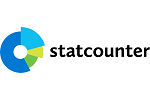Pollinating insects on bitter melon plant flowers (Momordica charantia L.)
Abstract
Bitter melon plant (Momordica charantia L.) is a potential commercial plant if intensively cultivated in agribusiness, this plant can be very beneficial if it produces high levels of fruit production, it cannot be separated from insect pollination activities. Insects that visit bitter melon plant flowers are actually beneficial and can be harmful. This field practice aims to determine the relationship of visitor insects associated with bitter melon flowers (M. charantia L.), by using the scan sampling method (direct observation) in the field, which counts the number of species and individual insect’s visitors then will be identified in the Plant Pest Entomology Laboratory. Observations were carried out for 5 weeks. Every week took 2 days of observation, and in those 2 days there were observations on the same day and time which was on Tuesday and Thursday at 06:00: 30 - 08:30 AM (morning) and 04:00 - 05:30 PM (afternoon). What was observed s the insects who visited the bitter melon flowers of 6 orders including Hymenoptera, Coleoptera, Thysanoptera, Lepidoptera, Hemiptera, and Araneae as well as 8 families and 12 species of the orders. Insect visitors associated with bitter melon flowers have different roles including pollinators, predators, visitors and pests. The behavior also varies, especially in taking nectar or pollen as a source of nutrition. Insect visitors associated with bitter melon flowers have different roles including pollinators, predators, visitors and pests. The behavior also varies, especially in taking nectar or pollen as a source of nutrition. Insect visitors associated with bitter melon flowers have different roles including pollinators, predators, visitors and pests. The behavior also varies, especially in taking nectar or pollen as a source of nutrition.
Keywords
Full Text:
PDFReferences
Arwati, S. 2018. Introduction to Sustainable Agriculture Science - Google Books. In Introduction to Sustainable Agricultural Science.
Institute for Botanical Research and Development. 1987. Pollination of Rambutan (Nepheuum Lappaceum L. Var. Lappaceum) Test Resistant. Journal Suppl. Ber. Biol. 3: 31–34.
Brigitha MG, Tairas RW, Mamahit JM E. 2017. Insects Associated with Curly Chili Plants (Capsicum Annum L.) in Kakaskasen Ii Village, North District.Sam Ratulangi University Journal: 847–854.
Budiman, AA DT Sembel, M.Tulung, V.Memah, M.Meray, M. Ratulangi, M. Hamming, G.Carner and BM Shepard. 2010. Biology and Attack Levels of Nesidiocoris Tenuis Reuter on Tomato Plants in North Sulawesi. Eugenia Journal. 16(1): 1 -12.
Campbell RD, Bischoff RD, Lord LM and Robertson AW, 2010. Flower color influences insect visitation in Alpine New Zealand. Ecology. 9(91): 2638-49.
Clarisa D, Dan Kasmara H. 2016. Diversity of insect pollinators of cucumber plants (Cucumis sativus L.) at the Vegetable Crops Research Institute (Balitsa), Lembang, West Java. Proceedings of the National Mathematics and Natural Sciences Seminar. 158–163.
Hasan PA and Atmowidi T. 2017. Relationship between types of pollinating insects and flower morphology in tomato and mustard greens (Brassica Juncea Linn.). Scientific Journal. 3(1):77–82.
Hasyimuddin, Syahribulan, & Usman, AA 2017. The ecological role of soil insects in the Patallassang plantation, Patallassang District, Gowa Regency, South Sulawesi. Proceedings of the National Seminar on Biology for Life, 1(10).
Khairiah N and Syamsuardi D. 2012. Types of Insects Visiting Water Henna Flowers (Impatiens Balsamina Linn.: Balsaminaceae). Andalas University Biology Journal. 1(1): 9–14.
Kotambunan E, Tulung M, Kandowangko D. 2012. Population Development of Ladybugs (Nesidiocoris Tenuis and Lygus sp.) on Potato Plants in Linelean Village, Modoinding District. E-Journal:1–11.
Kuncoro, Ikrimah Ekowahyu. 2018. Cultivation of Bitter Gourd Plants (Momordica Charantia L.) Using Bokashi Fertilizer Treatment. Thesis at Sebelas Maret University, Surakarta.
Leksono, AS 2017. Arthropod ecology. In UB Press.
Liska, Novita I, Masithoh S. 2023. Analysis of the exchange rate of chili (Capsicum Annum L.) farmers and the factors that influence it during the Covid-19 pandemic. Agriscience Journal. 9(1). https://doi.org/10.30997/jagi.v9i1.8257
Nugroho RB and Soesilohadi R H. 2015. Foraging Activities of Worker Bees, Trigona sp. (Hymenoptera: Apidae) in Gunungkidul. Biomedicine Journal. 8(1): 1–5.
Rante CS, Dan Dien M F. 2012. Population and Attack Levels of Nesidiocoris Tenuis Reuter. Eugenia Journal. 18(1): 9-15
Suhri AGMI, Soesilohadi RCH, Putra RE, Raffiudin R, Purnobasuki H, Agus A, Kahono S. 2022. The Effectiveness of Stingless Bees on Pollination of Bitter Melon Plants Momordica charantia L. (Cucurbitaceae). Journal of Tropical Biodiversity and Biotechnology. 7(3): 1–9. https://doi.org/10.22146/jtbb.69124
Sulistiyowati TI And Putra R E. 2016. Behavior of Insects Visiting Red Dragon Fruit (Hylocereus Polyrhizus). Proceedings of the National Seminar From Basic Science to Comprehensive Education. 205-212.
Suriana. 2017. Morphological Description and Taxonomic Status of Ants from the Mangrove Community on Hoga Island in the Wakatobi National Park Area. Biowallacea Journal. 4(2): 602–610.
Susilawati. 2016. Diversity and Abundance of Insects Visiting Cucumber Flowers in Different Landscape Structures. Thesis. Bogor Agricultural Institute Bogor : Bogor
Tanjung T R., Dahelmi and Mairawita. 2019. Insect Visitor Activity on Salak Flowers (Salacca Sumatrana Becc.) in Tapanuli Regency. Journal of Education and development. 7(2): 233–235.
Yulianto DC, Asra R, Adriadi A. 2022. Study of the Pollination Systems of Several Arecaceae Genus Based on Inflorescence Morphology. Biospecies. 15(2). https://doi.org/ 10.22437/biospecies.v15i2.14662
Zuraida ZED. 2019. Relationship Relationships of Plants in the Cucurbitaceae Family Based on Morphological Characters in Pidie Regency as a Learning Resource for Higher Plant Botany. Agroristek Journal. 2(1). https://doi.org/10.47647/jar.v2i1.88.
DOI: https://doi.org/10.21107/agrovigor.v17i1.22721
Refbacks
- There are currently no refbacks.
Copyright (c) 2024 Oktaviani Oktaviani



2.png)









